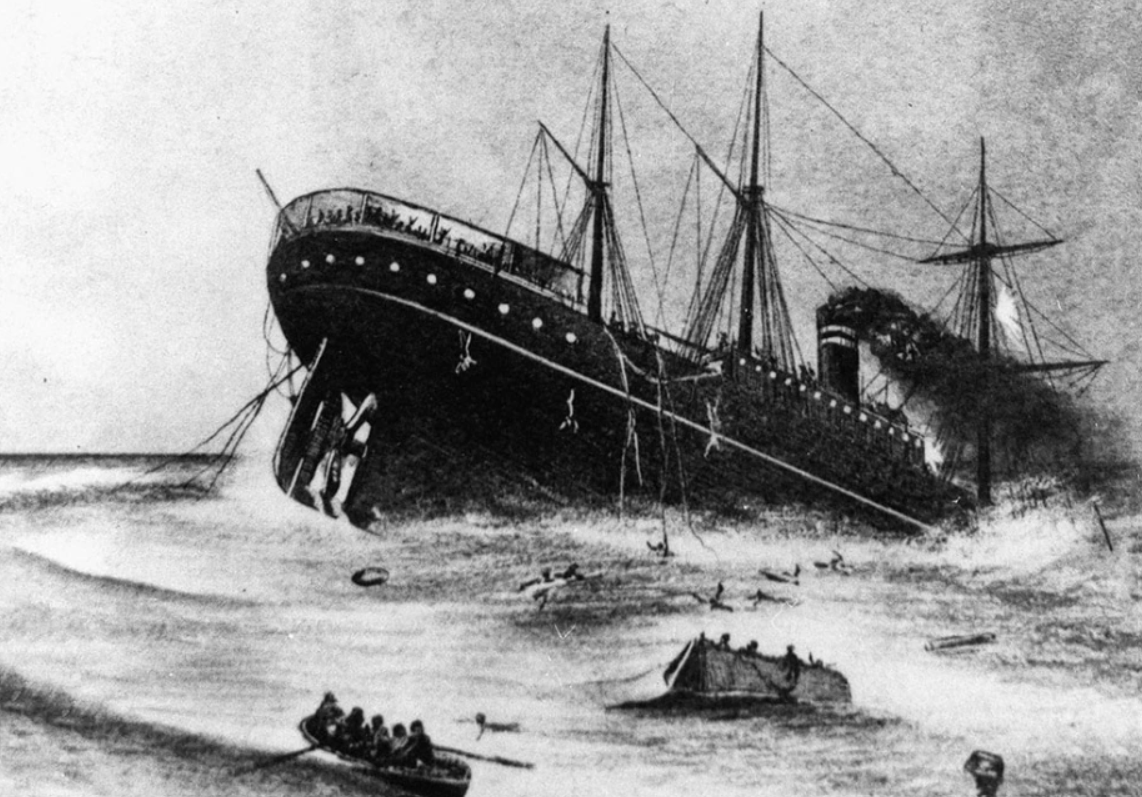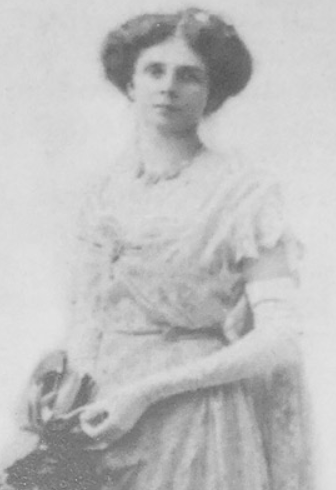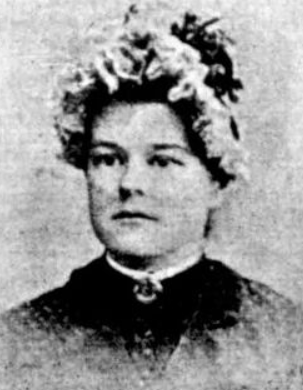
I’ve been to Thursday Island so many times in my imagination that I have a sense of hiraeth about it. Hiraeth is a Welsh word that connotes a deep longing for a homeland, or a home place, even if it was never yours, or you’ve never been there. In my imagination, I’ve walked the streets and the beaches, gasping at the extreme humidity, wandered into the local shops and said hello. I’ve climbed Green Hill Fort, explored Gab Titui, the local cultural centre, had a drink and a yarn at the “Fedz”, the Federal Hotel. In my imagination, I can go there, and feel as if I belong. Almost. Yet in reality, I’m a white woman from Brisbane, so far down south it might as well be another country. I don’t speak Creole (pidgin) or Kawrareg, the local indigenous dialect. And I don’t know anyone on TI to say hello to. In reality, I’d be the stranger, the one out of place.
This family memoir appears in the latest Quadrant.
Click here to subscribe
Is my craving for the beachcomber life unique? I don’t think so. We can all fantasise about long, lazy sunny days of blue skies and bluer water. No one’s in a hurry, and everyone’s lives are ordered by the sun and the moon and the tides. “Mañana” is the tempo, and everyone lives by the credo of “Don’t worry, be happy”. A little piece of paradise, away from everywhere.
Of course, TI isn’t paradise, or at least not always. Nearly 2200 kilometres from Brisbane, floating off the tip of Cape York in Torres Strait, almost within cooee of Papua New Guinea, TI has its share of natural and manmade disasters: cyclones and fires and flood tides. It’s an isolated island community, a long way from anywhere, with the obvious problems associated with isolated communities: issues of supply, resourcing, infrastructure. TI has a population of around 3000, in a total area of three and a half square kilometres, according to the 2016 census. Thirty-nine kilometres off Cape York, it is home to Torres Strait Islanders, Aborigines, Japanese, Chinese, Filipinos, Indians, Malays and white Australians, and every possible combination thereof.
This tiny speck in the ocean is home to Australia’s northernmost town, now known as Thursday Island, and Australia’s northernmost pub, the Torres Hotel. It also boasts the world’s smallest cathedral, the Quetta and All Souls Memorial Cathedral. The first Quetta was and is a town in western Pakistan, near the Afghanistan border. Quetta is also the name of a British India Royal Mail steamer that struck a rock near Thursday Island in 1890 and sank in less than five minutes, drowning 134 of the 292 souls on board. Just five of the 158 survivors were female. Two were unnamed Javanese women, perhaps the wives of Kanakas, as they were called, going home  after terms of labour on the cane fields of the Atherton Tablelands. Another was a baby girl, too young to be identified. She was later adopted as Cecil, perhaps Cecilia, or Cissy “Quetta” Brown. The other two were sixteen-year-old Emily Lacy (right) from Mackay and my great-grandmother Alice Nicklin.
after terms of labour on the cane fields of the Atherton Tablelands. Another was a baby girl, too young to be identified. She was later adopted as Cecil, perhaps Cecilia, or Cissy “Quetta” Brown. The other two were sixteen-year-old Emily Lacy (right) from Mackay and my great-grandmother Alice Nicklin.
Alice was then just nineteen years old. Family stories say she was not altogether happy about her journey. Her itinerary was planned to include visits to family in England and Ireland, a “season” and possibly advanced music studies in London, as well as a visit to the United States. Family stories also say she was in love with one William Horsley, the son of Methodist missionaries, raised in Fiji. The extended overseas trip had been intended to stonewall the relationship, perhaps due to concerns about Alice’s youth, or William’s intermittent ill-health, or his prospects as a provider.
 So they say. A photo of Alice shows a solemn-faced young woman in an old-fashioned ruffled bonnet. In other photos, she has a high forehead, and thick dark hair, piled high. I can picture her playing tennis and cricket, in long skirts, high-collared blouses and big hats, riding her father’s horses and her brothers’ bicycles.
So they say. A photo of Alice shows a solemn-faced young woman in an old-fashioned ruffled bonnet. In other photos, she has a high forehead, and thick dark hair, piled high. I can picture her playing tennis and cricket, in long skirts, high-collared blouses and big hats, riding her father’s horses and her brothers’ bicycles.
Alice (left) was athletic and sociable, a member of her high school swimming team and community cricket and tennis organisations. She was committed to her church, playing organ for the Sunday school and singing in church and civic choirs and choral societies. She assisted her mother in her volunteer social work with “poor women” and children (including some untrained community nursing). My Dad’s cousins who remember Alice in her later years say she was “great—very strong-willed”. She must have been, to persevere with a romance in the face of family disapproval, however well-intentioned.
Even more so, to survive what has been described as “Queensland’s worst maritime disaster”. At 9.15 p.m. she was out on deck with another girl, contemplating their last night in Australian waters and a last round of lemon ices before bed. The ship struck an unknown rock in Adolphus Channel, near Thursday Island, gouging a hole in its side. In the chaos, Alice managed to find her mother and get up to the stern of the ship. She later recalled stepping overboard as the water rose to meet them and dropping into a “dreadful pit” full of bodies and boots and fists, all fighting for space and air.
Alice survived by kicking off her heavy skirt and shoes, and swimming underwater until she found a clear space to surface. She clung first to a hatch-cover, already occupied by several men, and riding dangerously low in the water. Later she rested on the carcase of a drowned sheep, and then a length of planking with some rings in it.
She spent the next twelve hours floating, her arms locked through those rings to stop herself slipping off if she fell asleep. When daylight came, she managed to paddle to a small rocky islet with a tiny strip of beach, where she collapsed, exhausted, in the shallows. Alick, an Indian cabin steward from the ship, supported her to shore. They waited there all day for rescue, without fresh water or shade. They were finally picked up by a search-and-rescue party from Somerset, the nearest settlement on the mainland. The search party had landed to bury the remains of ship’s surgeon Dr Henry Poland when they discovered the two survivors. Poland’s grave was deliberately temporary; his remains were later removed to Thursday Island cemetery. He is the only identified Quetta victim to be buried on TI. Most of the bodies, including those of Reuben and Jane Nicklin, were never found.
Alice was taken back to Somerset, to the home of Frank Jardine, a second-generation Scots-Australian landowner, and his Samoan wife, Sana Solia. She recalled their “great kindness” to her, as she was suffering from the effects of shock, dehydration and exposure, as well as severe sunburn and skin lacerations. A cousin recalled seeing the scars on her arms years later. The next day, she was transferred to Port Kennedy, on Thursday Island, where she stayed about a week. There was a doctor on the island, and a small Catholic cottage hospital, not yet completed, which opened some months later. The European male survivors were accommodated at one of the island’s hotels. Emily Lacy was nursed in a private home. Alice may have stayed with her, as she also needed nursing care, but I cannot verify this.
After a week, she was well enough to leave TI and travel home, via Cooktown and Townsville, where she stayed with an aunt and uncle, a Methodist minister, for several weeks, recuperating. She came home to Brisbane in early May.
During this time, there had been memorial services at the site of the shipwreck, on Thursday Island, and in churches across Queensland, including the Nicklins’ home church, South Brisbane Wesleyan Methodist at Kangaroo Point. The rollcall of passengers is a tragic “who’s who” of Queensland society at the time. Alexander “Sandy” Archer, the manager of the Bank of New South Wales in Brisbane and his wife Minnie. Kate Barlow, an artist from Toowoomba. John Watson, founder of Watson Ferguson Printing Company, Queensland’s first printery, and his wife Elizabeth. Claudius Whish, retired Inspector of Road Surveys and his wife Ann. Thomas Hall, an Anglican cleric on his way to an ecclesiastical conference in Wales. His nieces, Emily and Mary, aged sixteen and thirteen respectively, bound for select London schools. Mary’s memorial plaque hangs in Quetta Cathedral today. Emily survived a phenomenal thirty-six hours in the water before being rescued.
And the Nicklins: Reuben, the manager of Butler Brothers Saddlery in Brisbane and his wife Jane, a social worker. Their nineteen-year-old daughter Alice. The staff of Alice’s school, Brisbane Girls’ Grammar, have attributed Alice’s survival to her exceptional fitness, as a prize-winning gymnast and member of the school swimming team. (They also told me that as a result of her experiences, life-saving education was introduced into their curriculum, which would have made Great-Gran proud.)
As for William Horsley, she married him in the end. After the sinking, Alice mourned both her parents, as custom then dictated, for a year, and her maternal grandmother, two years later. Alicia Lahey had been de facto housekeeper-chaperone to Alice and her two brothers, aged seventeen and twenty-one, after the sinking. (Strange that the boys were not included in an extended family trip overseas, but it does lend credence to the theory of attempting to kill off Alice’s romance discreetly, with no other family or close friends around to take sides.) In addition, William ran for office in the then Coorparoo Shire Council, of which Reuben Nicklin had been the single largest ratepayer. William and Alice’s uncle John Wesley Lahey both held office with this council for a year during 1892. (Local council elections were held annually.) The original hand-written minutes book, held at Queensland State Archives, bears witness to their civic efforts. William and Alice married in Christmas week of 1894, nearly five years after the Quetta sinking. They had twenty-one years of marriage, happy and otherwise, as real-life relationships go, and seven children. William died in 1915, of chronic nephritis, aged forty-eight. Great-Gran passed away aged eighty-one, the year her nephew Sir Francis Nicklin was installed as Premier of Queensland in 1951.
I don’t know whether Great-Gran ever returned to Thursday Island. The Anglican church on the island, like the Catholic hospital, was completed after the date of the wreck. It was dedicated in 1894 as the Anglican Quetta Memorial Church in honour of the dead. It was later renamed All Souls Quetta Memorial Cathedral, in an attempt to include those of other faiths. Today, it is the All Souls and St Bartholemew Quetta Memorial Anglican Church. The sanctuary features local indigenous artworks and original Quetta artefacts, including the bell, a lifebuoy and the ship’s stern riding lamp, perhaps the last sight anyone had of her before she disappeared into the dark. There are also stained-glass windows depicting the shipwreck and memorial plaques in honour of the living and the dead.
In February 1990, ten of Alice’s family made the eight-day round trip from Cairns to TI on an old lighthouse tender, the Noel Buxton, to mark the centenary of the Quetta sinking. On this “cargo boat cruise” were Alice’s youngest daughter Joyce Moore (who celebrated her eighty-first birthday on the trip), and grand-daughters Judy Hooper, journalist Lenore Nicklin and Shirl (Horsley) Krebs. Aunty Shirl’s account mentions visits to Somerset, now deserted, and “the grave of a Quetta man”, Henry Poland. The service on TI, on Ash Wednesday morning 1990, included the rededication of the Quetta bell and the dedication of a quilt made for the occasion by island women. (Alice is depicted in a pink dress, clinging to a sheep.) The celebrations continued with refreshments, souvenirs and performances from school dance groups in the grounds of the Memorial Precinct. Later that night, the service resumed from the vessel HMS Spirit of Torres, at Quetta Rock, over the original wreck site, surrounded by a flotilla of local boats. It was radio-broadcast live to the cathedral, where the Quetta bell was rung at 10.14 p.m., 134 times, once for each person who died. (Queensland was then trialling daylight saving.) Aunty Shirl remembered it as “quite moving”, despite the extreme humidity. Judy recalled that the service was somewhat overshadowed by a drunken MC and the launch of John Foley’s book The Quetta: Queensland’s Worst Disaster, “so it wasn’t very reverent”. C’est la vie.
The Noel Buxton was decommissioned after that run. Its place was taken by charter company SeaSwift. Until the start of Covid, the MV Trinity Bay ran weekly from Cairns to Cape York and back again, including stopovers at TI, its nearest neighbour Horn Island, and Seisia on the mainland. The 2023 season is still unconfirmed, again due to Covid.
So why am I so fascinated with TI? It’s a location rich with history, both political and personal. Although Great-Gran spent such a brief time there, the memory of the Quetta and its impact on island culture lives on, for my family and others who are descendants of Quetta survivors. In 1989, English teacher Narelle Brodie and TI High School students wrote and illustrated “The Sinking of the Quetta: An Imaginative Reconstruction”, a series of projected diary entries from passengers. Year 12 student Barbara Ibuai’s representation of Alice is insightful and empathetic:
As much as it will hurt, I have decided that I shall write down all that I can remember of that fatal night … for the sake of those who perished … I must go on. It is the only way to ease the pain. Perhaps if I commit my thoughts to words, the nightmares will cease and the pain may be released.
TI is the setting for a story of courage and survival, of coming of age, of sadness and loss and renewal, of identity formation and reformation. It was Great-Gran’s story. I’ve been hearing about it in family circles all my life, so now, indirectly, it is mine. One day soon, I’ll go there and wander down Douglas Street, comb Back Beach, have a drink at the “Fedz”. Maybe I’ll climb Green Hill Fort and wander through Gab Titui. I’ll visit the world’s smallest cathedral and share the perpetual vigil of the Quetta’s riding lamp, illuminating the high altar. Maybe I’ll stand under the bell tower and listen for the voices of my past. Perhaps I’ll take the “cargo boat cruise” and see all those places I’ve only imagined. And maybe, just maybe, this white woman from “down South” in Brisbane won’t be so out of place, after all.
Debra Kuss is a Brisbane writer.
 Sign In
Sign In 0 Items (
0 Items ( Search
Search









A good pitch for Netflix and HBO.
One’s ancestry is always a fascinating topic, tracing a story back in time about someone without whom one wouldn’t exist. This shipwreck makes a wonderful tale of how to survive and then thrive, a sterling ancestral find and familial saga told here with its imaginative impact. Ancestry though is exponential, the further back one goes the more ancestors one has. So many stories to be told, if only we knew. Three generations, including collaterals, is as far back as most people can go without expert genealogical help.
The best years of TI were in the sixties and seventies but they have passed just as the characters have passed. Mr Markey and his trade store on Horn, the Hospital Matron, the Catholic priest, the Thorpes and the Mary Elton launch (She is in Cooktown under another name) the Torres Strait pilots who guided ships along the inside GB reef both ways. The “Grand” Hotel that suffered the effects of a match and was rebuilt, the weekly Dugong slaughter on the beach near the Federal Pub, mostly all gone and civilisation has taken hold, well almost. I always remember the place when I see a display of thongs for we called them TI Ugg Boots.
Both a just and a beautiful lament, Debra.
See, who says the soul does not have a life all of its (own) making?
It spans the width and breadth of time, in time, ordinary time, no less.
Absolutely wonderful work there.